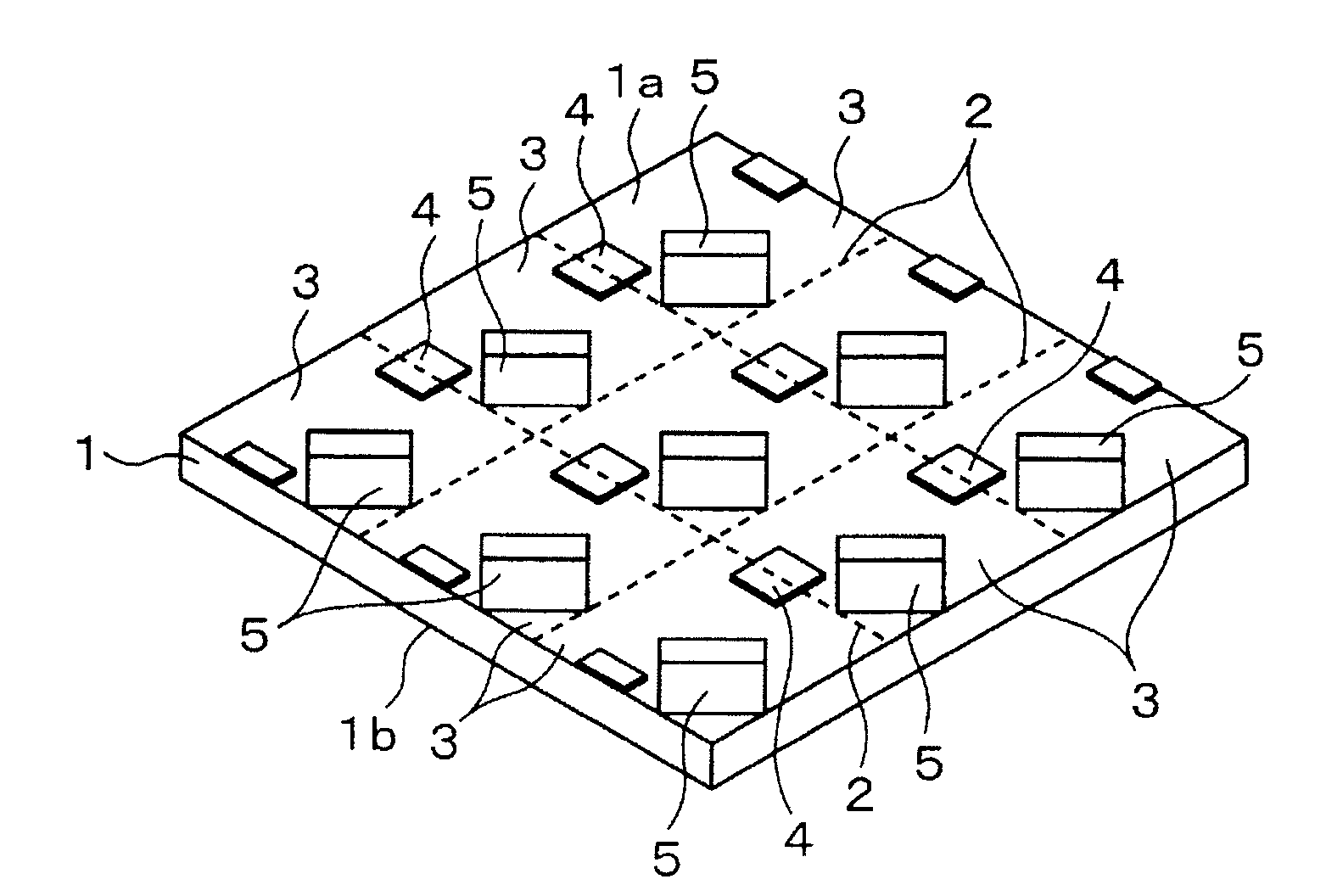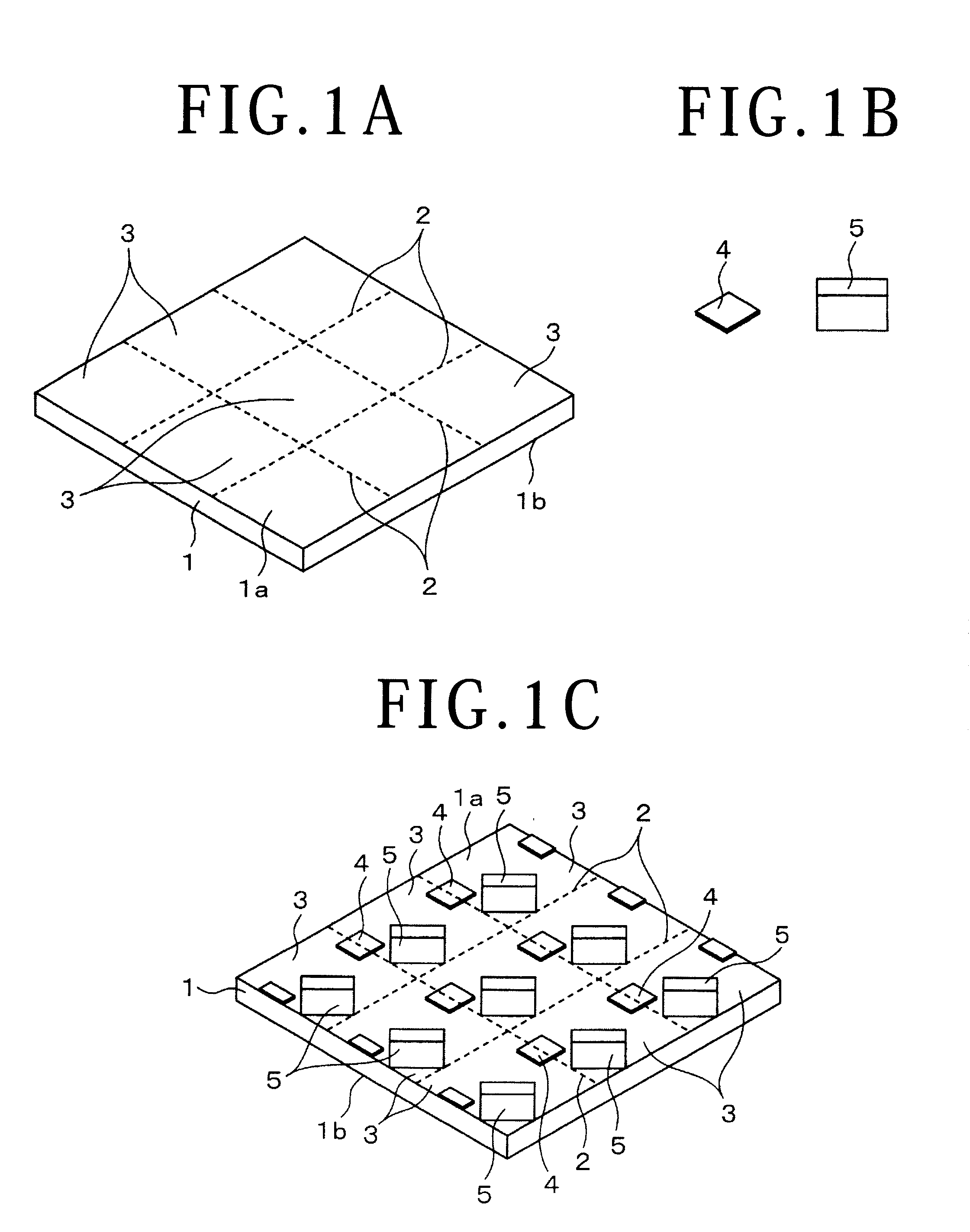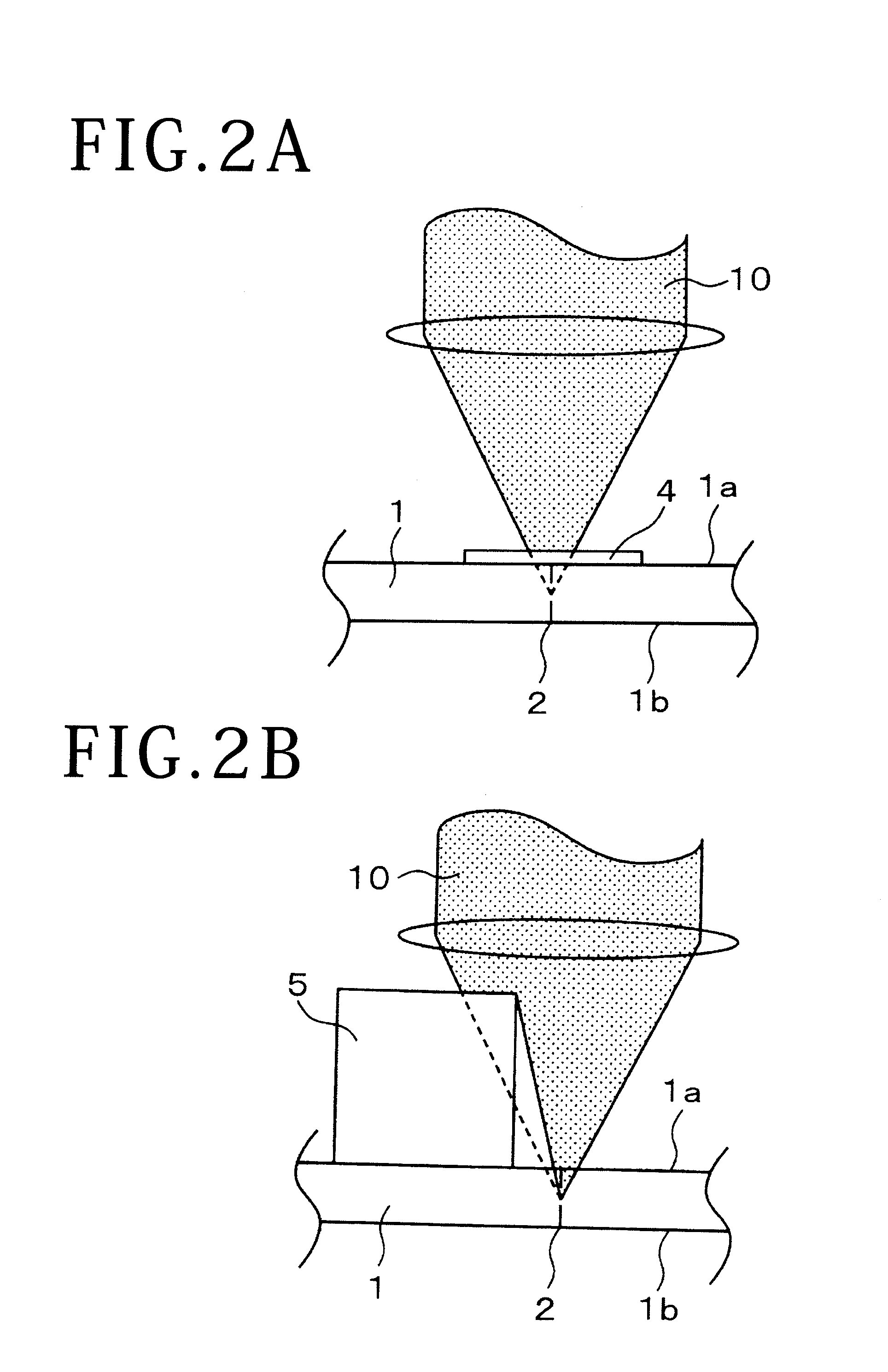Method of forming a modified layer in a substrate
a technology of modified layers and substrates, applied in the direction of manufacturing tools, metal working equipment, welding/soldering/cutting articles, etc., can solve the problems of substrate splitting, device subject to division, and high risk of chipping, so as to prevent the strength of the substrate from being reduced, the strength of the substrate can be maintained, and the strength of the substrate can be reduced.
- Summary
- Abstract
- Description
- Claims
- Application Information
AI Technical Summary
Benefits of technology
Problems solved by technology
Method used
Image
Examples
Embodiment Construction
[0023]A preferred embodiment of the present invention will hereinafter be described with reference to the drawings. Reference numeral 1 of FIG. 1A denotes a substrate to be formed with a modified layer by a modified-layer forming method according the embodiment. This substrate 1 is a silicon wafer or the like. A plurality of rectangular device areas 3 are sectioned on a front surface 1a of the substrate 1 along lattice-like predetermined dividing lines 2. Stacked articles 4, 5 such as TEGs, elements and the like shown in FIG. 1B are stacked in these device areas 3. These stacked articles 4, 5 are formed of a material such as metal absorbing or reflecting a laser beam. FIG. 1C illustrates the substrate 1 (the assembly) stacked with the stacked articles 4, 5 on the front surface 1a. The stacked article 4 is stacked to cover the predetermined dividing line 2 and to be spanned between adjacent device areas 3. The stacked article 4 is cut along the corresponding dividing line 2 concurren...
PUM
| Property | Measurement | Unit |
|---|---|---|
| area | aaaaa | aaaaa |
| external force | aaaaa | aaaaa |
| areas | aaaaa | aaaaa |
Abstract
Description
Claims
Application Information
 Login to View More
Login to View More - R&D
- Intellectual Property
- Life Sciences
- Materials
- Tech Scout
- Unparalleled Data Quality
- Higher Quality Content
- 60% Fewer Hallucinations
Browse by: Latest US Patents, China's latest patents, Technical Efficacy Thesaurus, Application Domain, Technology Topic, Popular Technical Reports.
© 2025 PatSnap. All rights reserved.Legal|Privacy policy|Modern Slavery Act Transparency Statement|Sitemap|About US| Contact US: help@patsnap.com



